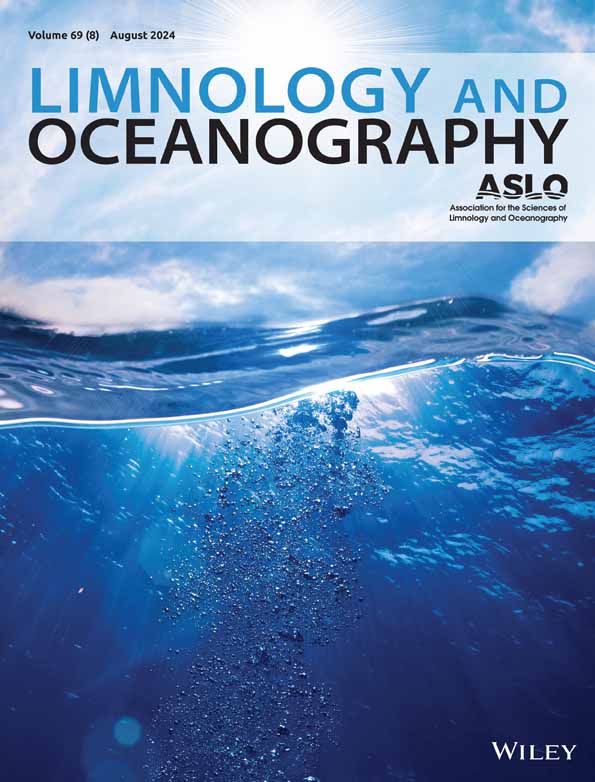Varying vulnerabilities: Seagrass species under threat from prolonged ocean warming
IF 3.7
1区 地球科学
Q1 LIMNOLOGY
引用次数: 0
Abstract
Understanding the response of various seagrass species to prolonged elevated water temperatures is crucial for effective management and seagrass species restoration amid increasing climate change‐induced ocean warming and marine heat waves. This is especially important in intertidal seagrass meadows, where heat can penetrate substrate depths of up to 50 cm. We assessed and contrasted the responses of five intertidal species—不同的脆弱性:海草物种受到长期海洋变暖的威胁
在气候变化引起的海洋变暖和海洋热浪日益加剧的情况下,了解各种海草物种对长期升高水温的反应对于有效管理和海草物种恢复至关重要。这在潮间带海草草甸中尤其重要,在那里热量可以穿透基底深度达50厘米。对5种潮间带物种(zostera muelleri Irmisch ex Asch, Halophila ovalis (R.Br.))的响应进行了评价和对比。(福斯克)嗜盐菌受训者。和嗜盐菌(Halophila spinulosa)。在一个多月的高温下,通过观察根茎的生长、活芽的数量、根的发育和小枝的存活。虽然所有物种都表现出对水温升高的负面反应,但我们的研究结果表明,它们对长时间变暖压力的反应存在显著的种间差异。两种嗜盐菌,包括H. ovalis和H. spinulosa,对高于环境温度10°C的长时间热应激敏感。卤藻(Halodule unintervis)对水温升高的耐受性最强,其次是细藻(Zostera muelleri),尽管后者仍然受到负面影响。潮间带脱毛蠓似乎极易受到干扰,在中生态环境中表现不佳。这项研究提供了对气候变化如何影响这些海草物种的初步了解,这些海草物种的生态功能一旦失去就不容易被取代。
本文章由计算机程序翻译,如有差异,请以英文原文为准。
求助全文
约1分钟内获得全文
求助全文
来源期刊

Limnology and Oceanography
地学-海洋学
CiteScore
8.80
自引率
6.70%
发文量
254
审稿时长
3 months
期刊介绍:
Limnology and Oceanography (L&O; print ISSN 0024-3590, online ISSN 1939-5590) publishes original articles, including scholarly reviews, about all aspects of limnology and oceanography. The journal''s unifying theme is the understanding of aquatic systems. Submissions are judged on the originality of their data, interpretations, and ideas, and on the degree to which they can be generalized beyond the particular aquatic system examined. Laboratory and modeling studies must demonstrate relevance to field environments; typically this means that they are bolstered by substantial "real-world" data. Few purely theoretical or purely empirical papers are accepted for review.
 求助内容:
求助内容: 应助结果提醒方式:
应助结果提醒方式:


